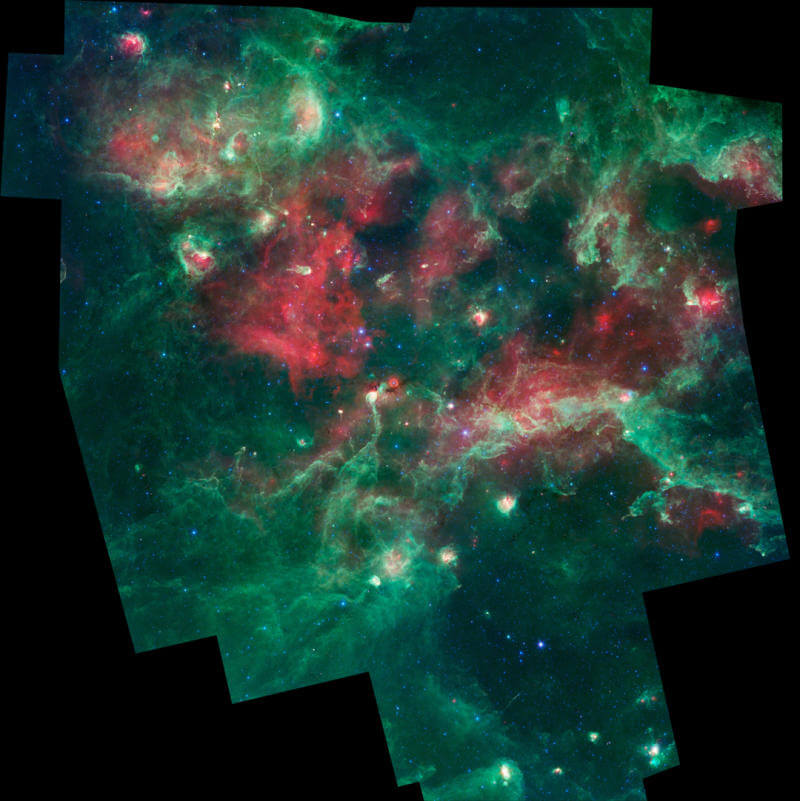The stars we see today were not always as peaceful as they appear today, floating alone in the darkness of the night. Most stars, including our Sun, grew up in a cosmic commotion - as shown by new images from the Spitzer Space Telescope

The images show the most active and turbulent region of a star region in our galaxy known as Cygnus X, an unstable cloud of gas and dust located 4,500 light-years away in the Cygnus constellation. Cygnus X is so named by radio astronomers because it was one of the brightest radio sources in the Milky Way. (Not to be confused with the Cygnus X-1 black hole).
Cygnus X, which covers an area XNUMX times larger than the full Moon and is home to massive stars, and many more stars around the size of our Sun or smaller. Spitzer took an infrared image of the entire region, bubbling with star formation.
"Spitzer has photographed a variety of activities occurring in the Star Birth God Cloud," says Joe Hora of the Harvard-Smithsonian Center for Astrophysics, the principal investigator. "We see flattened bubbles around massive stars, columns of new stars, dark filaments full of star embryos and more.
It is hypothesized that most of the stars were born in regions like Cygnus X. Over time the stars dispersed and migrated as they moved away from each other. It is possible that our sun was once tightly packed together with another, more massive sun in a similarly chaotic, though less extreme, region.
The star-forming regions in the clouds are marked by bubbles or trenches carved by the radiation and winds from the most massive stars. These massive stars tear the cloud's material to pieces, stopping the formation of some stars while accelerating the birth of others.
"One of the questions we wanted to answer is how such violent processes can lead to both the death of stars and the birth of new stars," says Sean Carey, a team member from the Spitzer Science Center at the California Institute of Technology. "We still don't know exactly how many stars form in such a disruptive environment."
"Spitzer's Ifnera Red images allow us to answer these kinds of questions by giving astronomers a window into the dustiest part of the galaxy. The infrared light passes through the dust, while the visible light is blocked. For example, interstellar embryos covered by massive hands of dust pop out in Spitzer's images. In some cases, the young stars are embedded in finger-like columns of dust, where the stars line up and point toward massive stars in the center. At other times, these stars are seen in a long snake-like line of thick dust.
Another question scientists hope to answer is how these pillars and filaments of stars are connected to each other. "We have evidence that massive stars accelerate the birth of new stars in the dark filaments, in addition to the columns, but we still have hard work to do," Hora said. "It will take more time to analyze the results and the surprises still ahead," he said.
